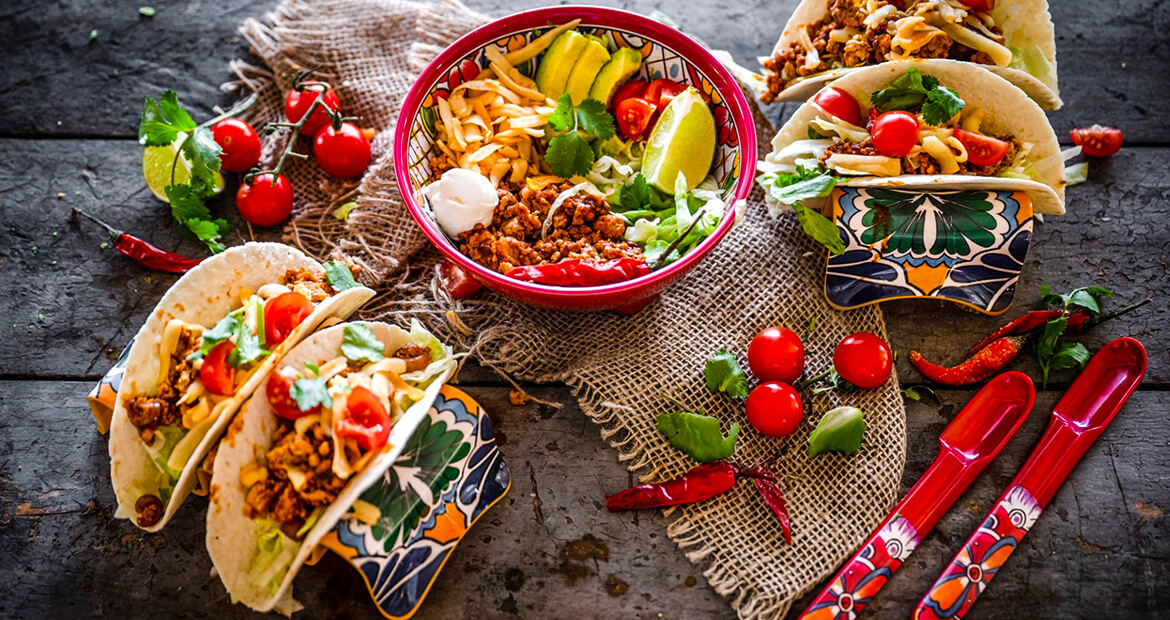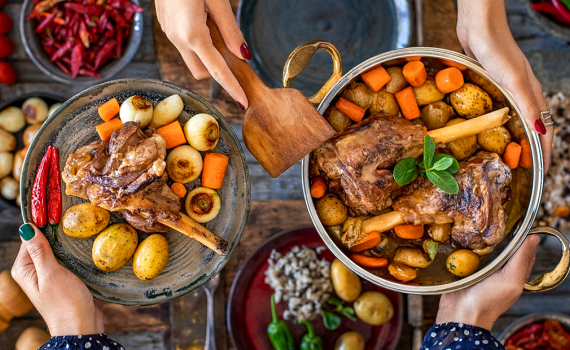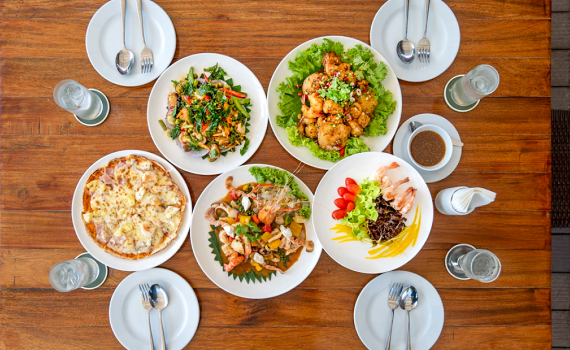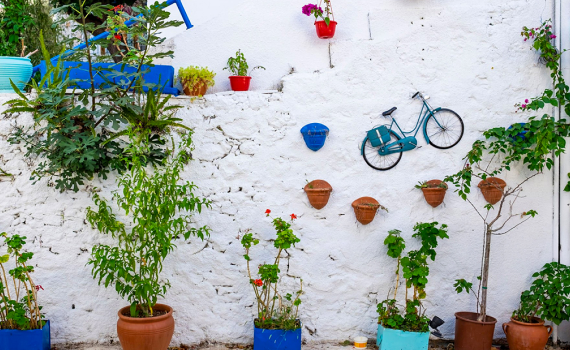Mexican cuisine has captured the hearts and palates of food lovers across the globe with its vibrant colors, rich aromas, and unique street flavors. Mexican food is more than just a culinary tradition. It is often regarded as a way of life, born from a seamless blend of traditional recipes and modern interpretations.
Mexican cuisine, formed by the reflection of history, geography, and the spirit of the people in the kitchen, leaves its distinct mark on everything from festive celebrations, holidays, streets, and family tables.
Mexican dishes reflect the diversity of the land, changing from region to region through local ingredients and cooking methods, with every plate telling a story of culture, people, and time.
The Origins of Mexican Cuisine

The roots of food in Mexican cuisine date back thousands of years to ancient civilizations such as the Aztecs, Mayans, and Olmecs. These people shaped the very first modern recipes by cultivating and refining staples such as corn, beans, squash, chili peppers, and avocado.
The arrival of the Spanish in the 16th century introduced a new wave of ingredients such as beef, chicken, pork, rice, dairy, and an array of spices that forever altered the culinary landscape.
Yet, perhaps the most remarkable trait of the food in Mexican cuisine is its ability to absorb foreign influences while staying firmly original in its own cultural identity. The result is a kitchen rich in both heritage and flavor at once, in history and taste.
Most Popular Mexican Dishes

The popular Mexican dishes that have brought Mexican cuisine global are a result of their distinctive flavors and cultural depth. Tacos, enchiladas, tamales, quesadillas, guacamole, and churros are only some of the most beloved ones. These recipes are not only cherished by locals but have also earned international admiration.
Each dish originates from a unique corner of Mexico, carrying with it the ingredients, cooking techniques, and spirit of that region. While some are prepared with simple ingredients by street vendors, others are prepared with elaborate recipes during grand festivities.
Varieties of Tacos

Taco stands as one of the most popular and beloved icons of Mexican cuisine. It is prepared by folding soft or crispy tortillas around a wide array of flavorful fillings. Among all Mexican food recipes, Tacos are perhaps the most changable one since they are easily adapted to suit different tastes with fillings ranging from meat and seafood to vegetables, and even fruit.
Popular varieties include taco al pastor (marinated pork), carne asada (grilled steak), barbacoa (slow-cooked lamb), and fish tacos (fried or grilled fish). In some regions, tacos filled with eggs or beans are even enjoyed for breakfast. In Mexico, Tacos are more than just food; they are a culture of social ritual and an expression of shared culture.
Enchilada
An enchilada is made by rolling tortillas, typically filled with meat, chicken, or cheese, and baking them in a rich, spiced sauce. Enchiladas, even richer in flavor with red or green chili sauces, are a staple both on the streets and at family tables. Among the names of Mexican foods, enchiladas stand out for the bold flavor and appealing presentation.
The ingredients and spice level vary depending on the region. In Oaxaca, cheese-filled enchiladas are especially popular, while the northern states tend to favor meat-heavy versions.
Tamale
Tamale is one of the oldest and most traditional dishes in Mexican cuisine. A dough made from corn flour is filled with ingredients such as red meat, chicken, vegetables, or occasionally fruit. The filled dough is then wrapped in corn husks and steamed to perfection.
Although preparing Tamales takes a lot of time, it holds deep cultural meaning, being the centerpiece of special occasions, ceremonies, and religious festivals.
Quesadilla
The quesadilla is prepared with a folded tortilla filled with various ingredients and cooked on a griddle until golden and warm. While cheese is the classic and most common filling, quesadillas can also feature mushrooms, meat, vegetables, or even flor de calabaza (squash blossoms). Standing out as practical among Mexican regional dishes, quesadillas can be a quick snack or a satisfying main course.
Guacamole
The roots of Guacamole trace back to the Aztecs. Guacamole is a traditional Mexican dip made by mashing ripe avocados and blending them with lime juice, cilantro, onion, and tomato. It is most famously paired with tortilla chips. This sauce, which is as important as traditional Mexican dishes, is versatile enough to be served with almost any dish.
Today, many restaurants put their own creative twist on guacamole, enriching it with unique spices or unexpected fruits like mango or pomegranate. Thanks to the healthy fats in avocado, guacamole is not only delicious but also a nourishing, wholesome choice.
Churros
When it comes to sweets, few treats are as closely associated with Mexican cuisine as churros. These long, golden sticks of fried dough are coated in a mixture of cinnamon and sugar, served piping hot, and often with a side of warm chocolate sauce or dulce de leche (caramelized milk).
Although they evolved with European influences, originating from Spain, churros have taken on a life of their own in the list of Mexican foods. Whether enjoyed at street markets, in the quiet of early morning, or late at night during lively gatherings, churros are the perfect companion to a sweet craving or a good conversation.















